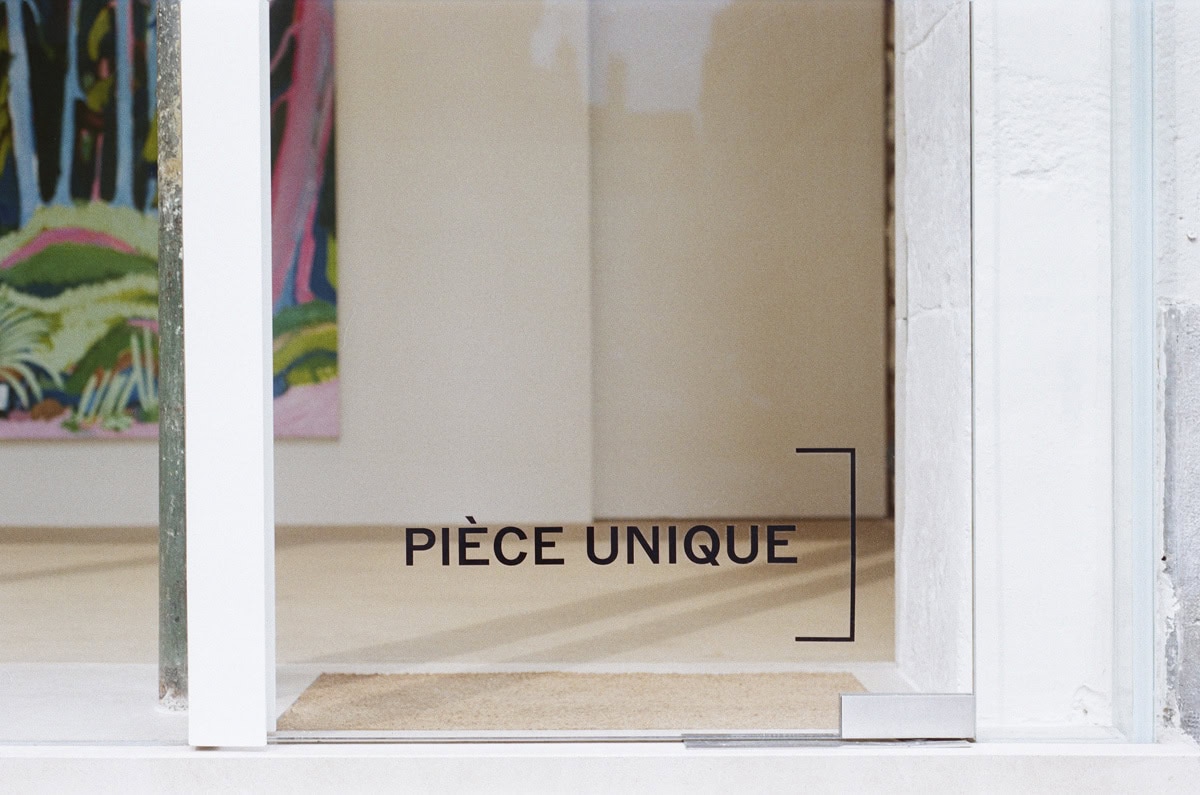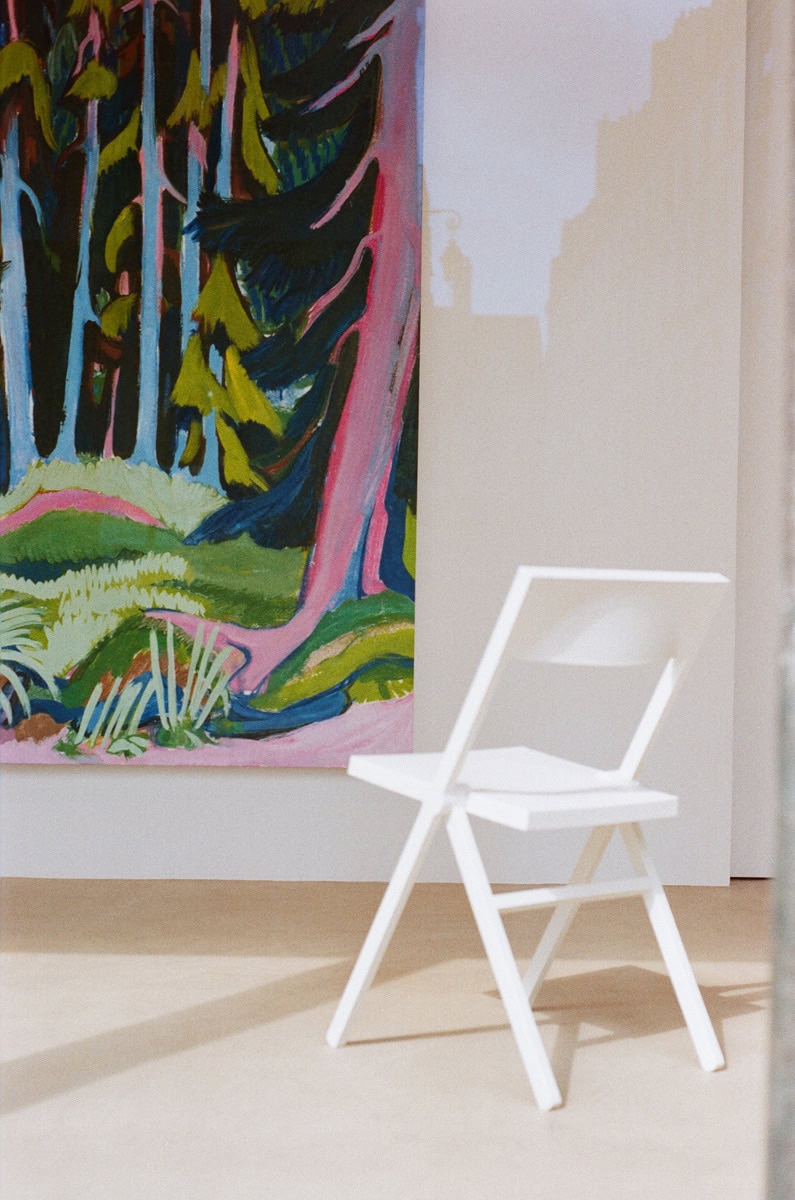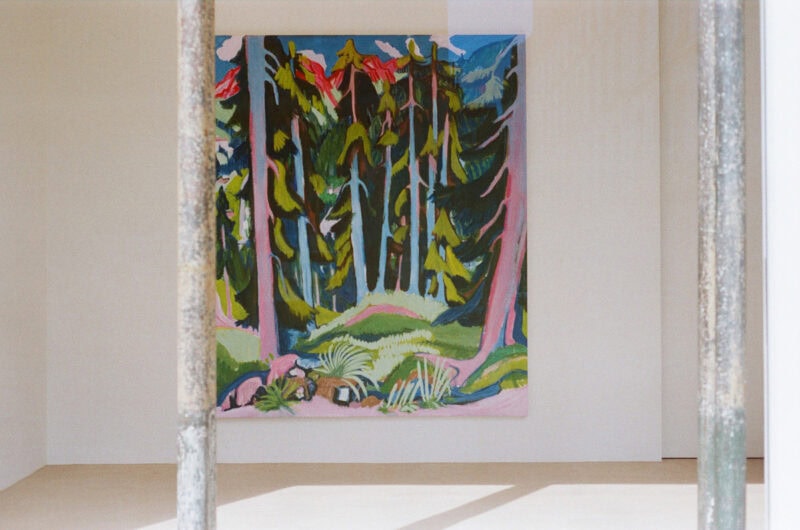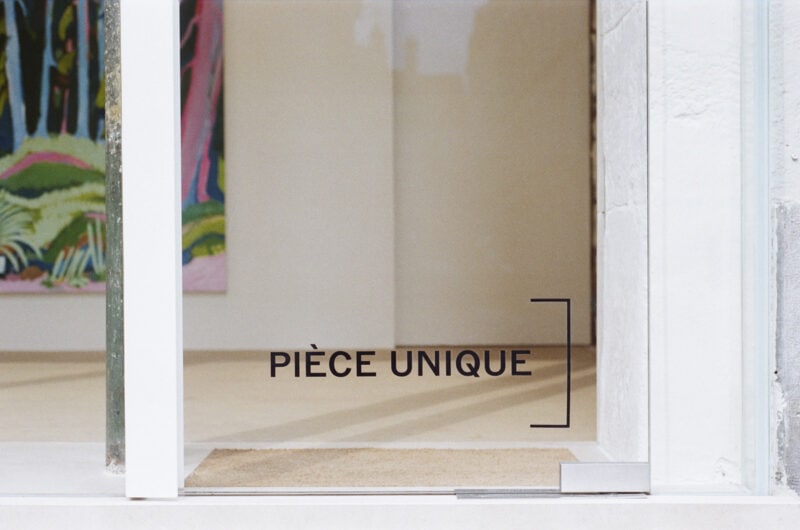The MASSIMODECARLO Gallery has arrived in Paris and the idea is to replicate the project by gallerist Lucio Amelio, who opened the Pièce Unique location in the French capital in 1989. Today as then, we are talking about a gallery sui generis. The concept that Lucio Amelio wanted for his exhibition space (used from 1989 to 1994) was an “emergency room” open 24 hours a day, with the gallery visible from the window for those in urgent need of art. «I want a transparent gallery. I want homeless people to be able to access art at any moment». A single piece, a single chance. What was important was the idea of facilitating an encounter, perhaps a spark, even accidental, with a powerful idea. Some might object that a homeless person has other priorities and problems to resolve before worrying about contemplating a work of art exhibited in a gallery. But we won’t attempt to resolve, for now, the different approaches to reality of those who move capital and those who are forced to sleep on the streets. Let’s accept that a homeless person might experience pleasure and comfort from enjoying a piece exhibited on the wall of the gallery or in the space. Would anything change if the homeless person were to enter a larger gallery with an exhibition showing many different artworks? Or if the gallery had multiple windows that looked onto paintings, sculptures and videos?
Again, let’s not dwell on the indulgence that the odd wealthy do-gooder might confuse for support on the road to salvation. I will list just a few names: the artists involved, the names of the artworks and the dates. When Amelio opened Pièce Unique on Rue Jacques Callot in 1998, he designed the gallery space with Cy Twombly. Over the course of five years, 22 exhibitions were held here. The first was Daniel Buren, followed by many of the most interesting contemporary artists of the time: Mario Merz, La Déclaration des droits de l’homme et du citoyen (1989); Jannis Kounellis, Sans Titre (1989); Alighiero Boetti, Passe-Partout (1990); Cy Twombly, Summer Madness (1990), Thermopylae (1991) e Sans Titre (1993); Georg Baselitz, Frau Aus Dem Suden (1991); Mimmo Paladino, Sans Titre (1991); Rosemarie Trockel, Sans Titre (1992); Giulio Paolini, Pièce Unique (1992); Miquel Barcelò, Sans Titre (1992); Bertrand Lavier, Sans Titre (1993); Andy Warhol, Vesuvius (1985-1995); Enzo Cucchi, Dio (1995); Sol LeWitt, Negative Pyramid (1997); Annette Messager, D.U.V.E.T.R.A.V.E.R.S.E.I.N.S. (1997); Christo, Package (1969-1998).
Now let’s move on from Amelio’s original intention and look at the new space opened by Massimo De Carlo. Anyone strolling along Rue de Turenne can look inside, through the carefully selected anti-reflective glass. Some architecture magazines have observed that Kengo Kuma, quite coherently and using a process of subtraction, has emphasised the road-gallery relationship while inside the walls have been chipped away to reveal the limestone beneath and pull focus to the white wall that cuts the space in two and functions as the exhibition backdrop. Massimo De Carlo seeks to offer the visitor an appropriate atmosphere within a non dispersive space, so they can grasp the essence of what there is to see: «Pièce Unique is a challenge. […] The goal is to build a new relationship between the visitor and the artwork through highly concentrated exhibitions, which might be expanded over time, but which allow you to concentrate on the artist’s work. I have always believed that this was the greatest purpose of our work: great artworks bring great ideas, they do not necessarily have to be of huge dimensions». The Covid-19 pandemic has forced almost the entire population of our planet to contend with limited space, both in terms of our perception and the space in which we live and move in captivity. Staying in one room for hours on end, whether smart-working or battling with the fear of catching the virus, has seen us reassess the relationship between individuals and the living space, people and territory, technology and nature. It has made a definitive mark on the consciousness of millions of people. In light of this prolonged exile in small spaces, bound by countless rules and limitations, the Paris gallery might be the inspiration for certain reflections.
At Pièce Unique, there is a one-on-one relationship between spectator and artwork, in a space of a similar size to a single room. One enters into silent dialogue with a single piece, created by a contemporary artist especially for this space. The solitary spectator who steps into those few metres squared, reduced to the utmost minimal, is encouraged to have a private and intimate experience as though the exhibition had been prepared and planned solely for them. An artwork and a window as a metaphor for availability and openness, for passers by and lost flâneurs. The individual artwork and the space should be read as cathode and anode, designed to move something particular in those who are willing. The journey does not solely take place in a space where the external flow (on the street) spills inside and vice versa, but in an upside-down time too. I think of the intermediate world evoked by Pavel Aleksandrovič Florenskij and the instantaneous time that we sometimes experience when dreaming. I am referring to the moment when we wake up, a moment that encapsulates the entire duration of the dream (The Royal Doors, Essay on the Icon, Milan 1977, pp. 19-30). The gallery is currently exhibiting a painting by Rudolf Stingel: Kirchner Waldlandschaft mit Bach, 1925. It is a reinterpretation of a piece by Ernst Ludwig Kirchner, Forest Landscape with Stream (1925-1926), which lives at Kunsthaus Zürich. Which senses are activated when a painting of another painting is placed in a room? An analytical copy of a well-known painting means working on the idea of the double, openness towards otherness: from one to two, from the single space to a wider dimension, from the intimate internal dimension to the extension of the consciousness towards something that belongs to the universal.
Compared to large galleries or museums that present the visitor with many pieces, perhaps connected by themes, style or other motifs, what can this single room with a single artwork make us feel? Does it trigger other connections of meaning or open a particular door- way in our vision? Does Stingel’s work on the unconscious and human relationships focus in on the personal or transpose onto the canvas elements of the everyday, of mankind, of real “signifying signs”, symbols, inferred through the action of painting? A 21st-century artist re- paints a 20th-century painting, selecting an icon of the suffering of avantgarde artists under dictatorships, an artist driven to suicide by the regime that condemned his art as degenerate. Looking at a copy of Kirchner in this small space makes me think of how Rudolf Stingel used the space at Palazzo Grassi in 2013. With the utmost freedom of execution, the Merano artist entirely transformed the museum, invading the architectural space with oriental patterned upholstery and carpeting. The “carpets” that covered entire rooms, floor and walls included, conceptually referred to a non-painting that went beyond the boundaries of the frame. The artist had tried to overcome the limit of two-dimensionality typically associated with painting so that the exhibition could subvert the usual spatial relationships between the viewer and the artwork. Starting with the oriental rug and its texture – both a reference to the relationship of the Republic of Venice with the Turkish (and Islamic culture) and an iconic presence taken from the Viennese studio of Sigmund Freud in the early 20th century – Stingel had tried to recreate the sensory experience of undergoing analysis, of beginning a labyrinthine journey that takes in repression, ghosts, projections, attempts, overcoming. The paintings and the images – in black and white or grey tones – exhibited among the signs and colours of the oriental textures hinted at what is “buried” in the memory, repressed experiences that re-emerge, figures or abstractions that belong to other times or dimensions. Patterns and textures, between abstraction and figuration, became a more complex whole: they brought their signs and traces into the deepest existential issues of memory, time and vanitas. The exhibition at Palazzo Grassi was a clear opening of vision towards other relationships, both experiential and synesthetic, introducing a participatory dimension into the pictorial process. The intrusion of photorealism between the wefts and warps of the carpets (also photographed or scanned) raised further issues, suspended between what comes before analysis and what instead relates to the potential moving on through new interpretation or reading. Vintage black and white photographs of past artworks created other links and other deviations, left to float in the waters of the spectator’s gaze. So just what is taking shape at the Pièce Unique gallery, between the reproduced painting (a pictorial photograph), the reference to the original Kirchner kept in a museum and the gaze of the passers by who stream down Rue de Turenne, in all the possible connections between original and copy, exterior and interior, simulacrum and pulsating thing?
Credits
Words by Mauro Zanchi
Photography by Chiara Kurtovic
Starring MASSIMODECARLO



